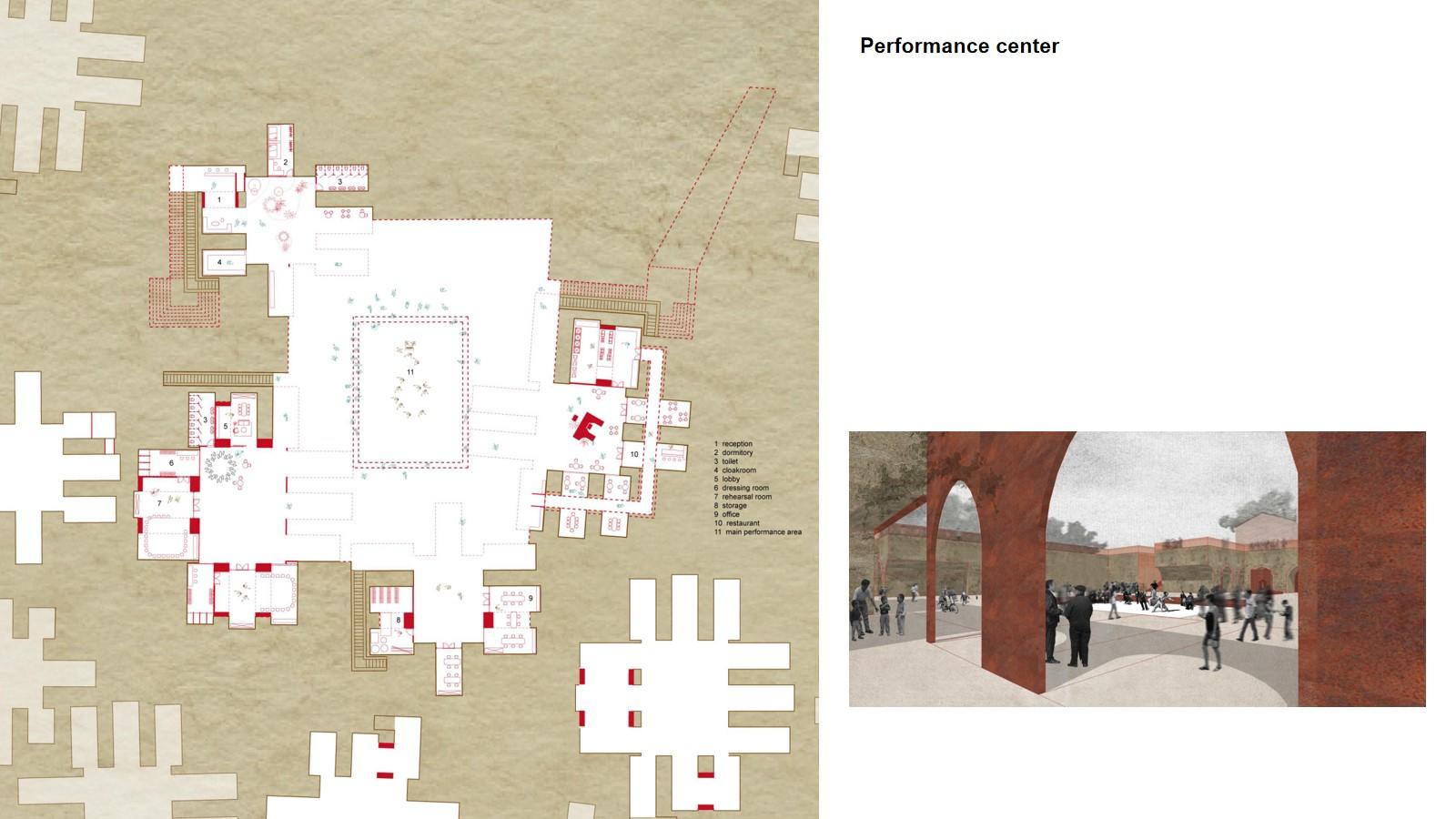Rural Acupuncture
Image
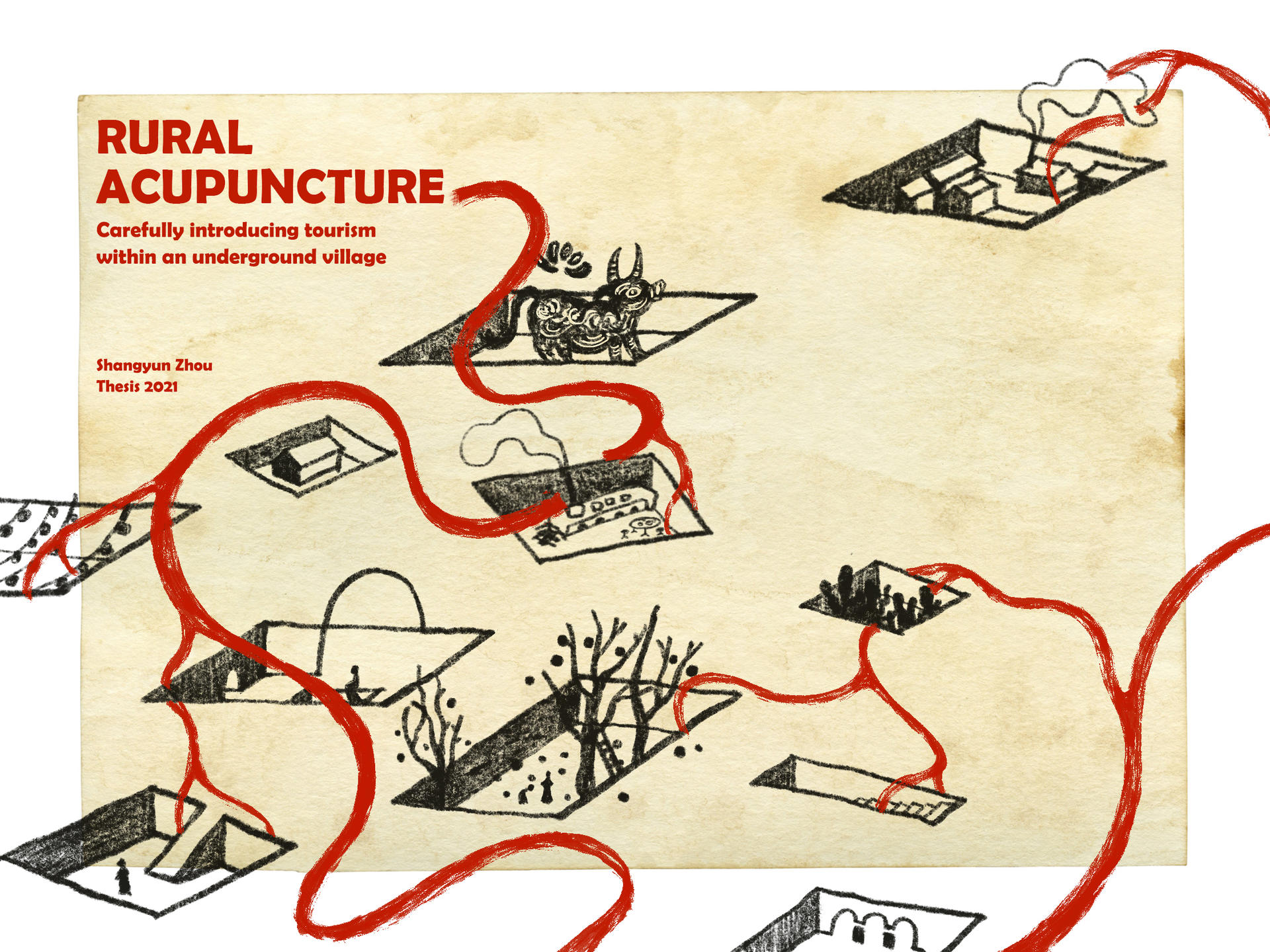
ABSTRACT
Di Keng Yuan(地坑院) are traditional cave dwellings in northern rural China, with a history of over 4,000 years of use. Today, living in Di Keng Yuan represents poverty and lower social status. Most Di Keng Yuan are ignored and abandoned by local people more interested in urbanization and the evolution of society. Yaodi Village is facing such a challenge of hollowing, meaning 1.young rural labor flows spontaneously into big cities, resulting in increased rural aging and 2.residents living in rural areas have gradually moved to the surrounding areas, resulting in the abandonment of cave dwellings, and the village is becoming a shell with no life. The original community has gradually lost its vitality. The architecture and social network of Yaodi Village are fragmented. In the past, the role of the Chinese village was to support rural life and produce, through planting and raising livestock, but now culture and tourism have become the two fastest-growing industries in rural China. People in cities are eager to return to the countryside to enjoy nature and recover a lost lifestyle. However, in many instances the countryside has been over-developed for tourism, resulting in the destruction of the original environment, local residents’ lives and traditional folk culture. The tourism experience under this development model runs counter to the original rural life and destroys everything it touches.
This thesis aims to formulate a new development model for rural tourism that forges connections between community members and beyond, between villagers and visitors. The concept of “rural acupuncture” is a sustainable way to revitalize Yaodi Village. Phased interventions that insert small-scale architectural functions into the village that relate to its historical context will introduce urban resources to Yaodi Village and improve conditions for long-time residents. By repairing and renovating Di Keng Yuan, I propose to boost tourism while maintaining the regional identity and create cultural experience. “Rural Revitalization not only constructs buildings in rural regions, it integrates the economic, social and cultural aspects and presents a more synthesized complexity.” Rebuilding communities holistically requires villagers and visitors to participate in the renovation activities together, in the process reclaiming ownership of their hometown. This will spontaneously lead to sustainable rural maintenance and development, perpetuating folk culture and facilitating exchange between urban and rural people. The transition to tourism of vernacular architecture is not the ultimate goal, but instead a way to revitalize the countryside and rebuild the regional identity of the local community.
Di Keng Yuan 地坑院 is a kind of underground cave dwellings in northern rural China. This is in the arid area of the Loess Plateau, where there are no mountain slopes and gullies available. Farmers skillfully use the characteristics of loess to dig a square pit on the spot, and then dig caves on the four walls to form a sunken cave dwelling. It is warm in winter and cool in summer. Di Keng Yuan is excavated downwards by using the natural terrain, and the structure is integrated with the earth, so there is almost no trace of that on the ground. The style of Di Keng Yuan is quite different from that of ordinary brick-concrete buildings. This unconventional construction method is the greatest value and charm of Di Keng Yuan. The entrances of each Dikeng Yuan are independent, and each Dikeng Yuan is not connected. The relationship between the entrance and the courtyard is not clear on the ground. The ground space is completely public, there is no definite path on the ground leading to each Dikeng Yuan. Trees are used to divide the space and determine the circulation. Private circulation includes different heights, and public circulation occurs only on the ground - the flat surface.
Image
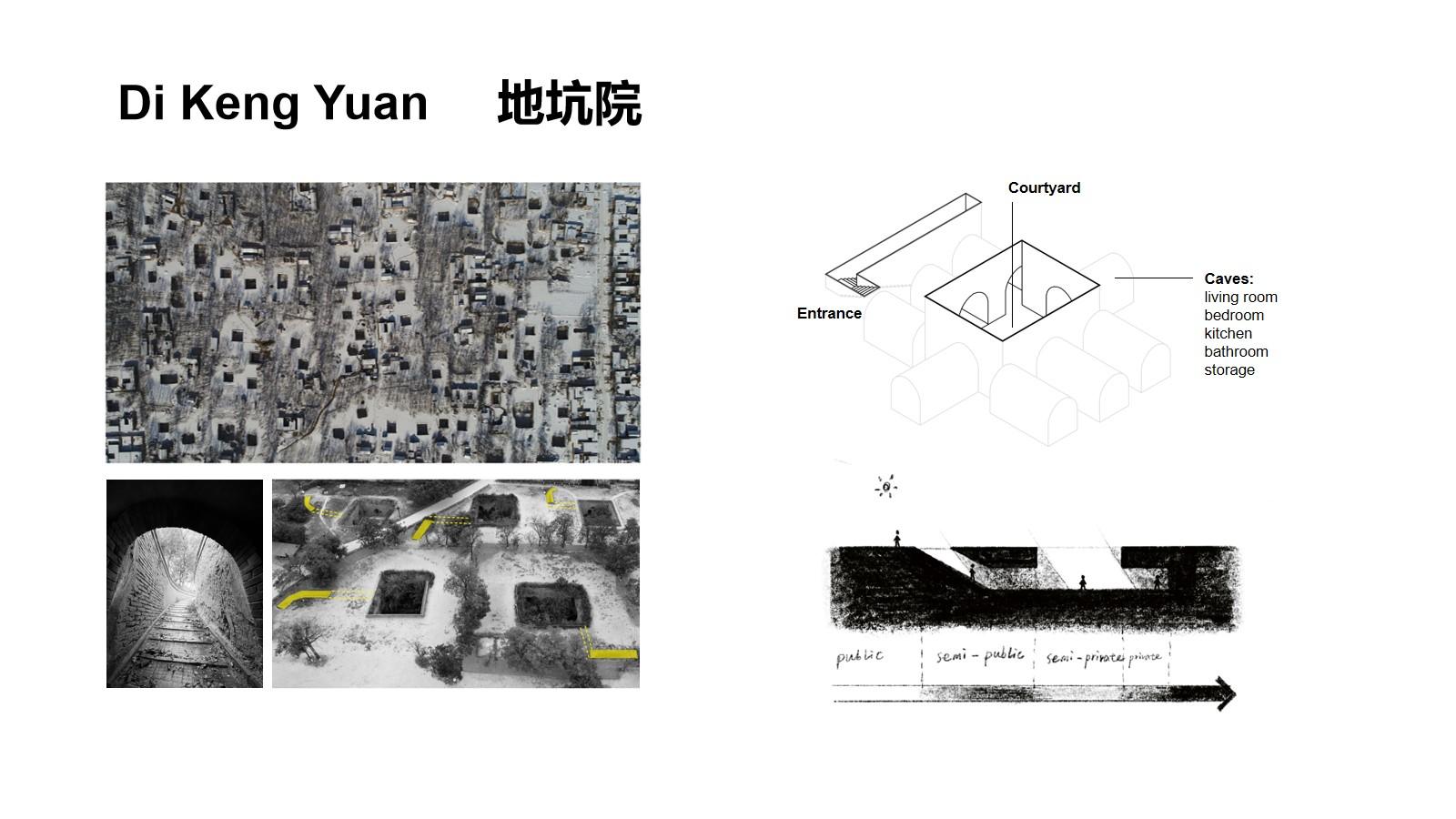
Image
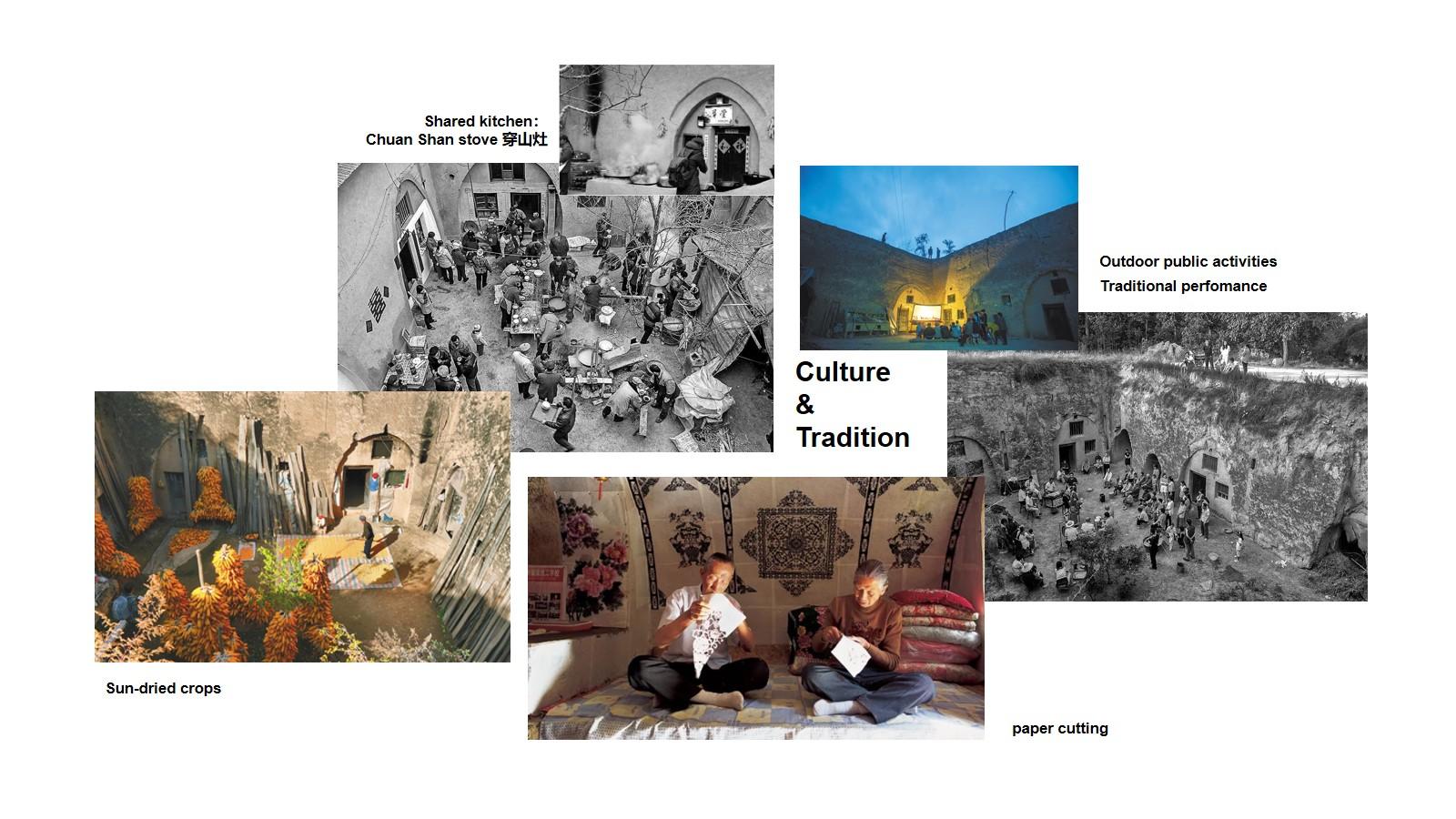
There are some special folk activities in the area where the Dikeng Yard is located. Paper-cutting is often accompanied by opera activities. Some people sing and play, and some people listen to the opera and cut paper. The two activities are carried out at the same time, forming a unique atmosphere. This kind of activity usually takes place in courtyards or on the ground. The courtyard and the connected ground have increased the possibility of being watched by others. The banquet is an important part of the wedding. According to local customs, almost all people in the village will come to the banquet. The courtyard space is often unable to meet the needs, so the banquet will extend to the space above the ground. The boundaries and ownership of the ground become blurred, making the entire scene continuous and vibrant. Chuanshan stove穿山灶 can meet the needs of people cooking at the same time. When there are activities, people will cook and eat together in the courtyard.
THE STRATEGY
Image
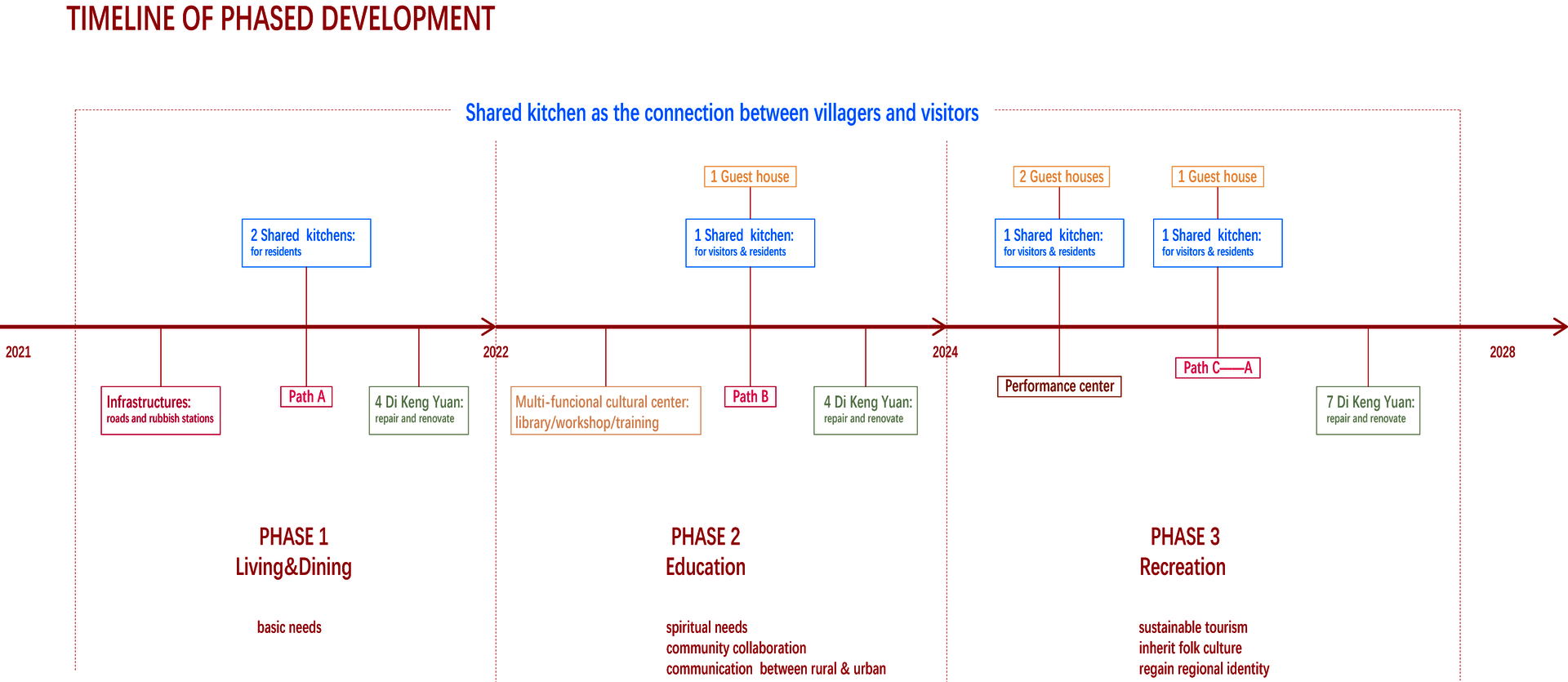
Image

Image

Image

Image

Image
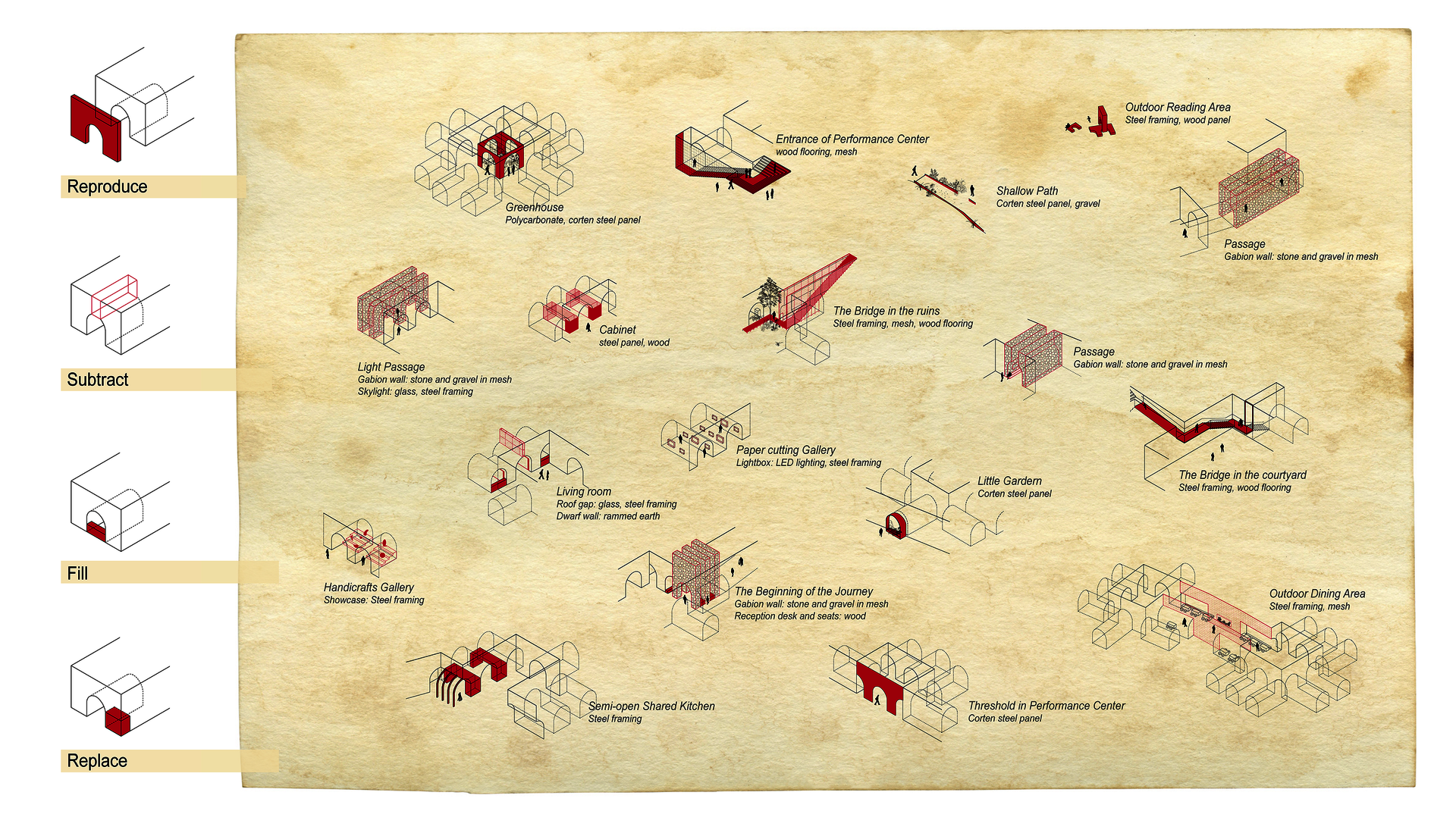
Image
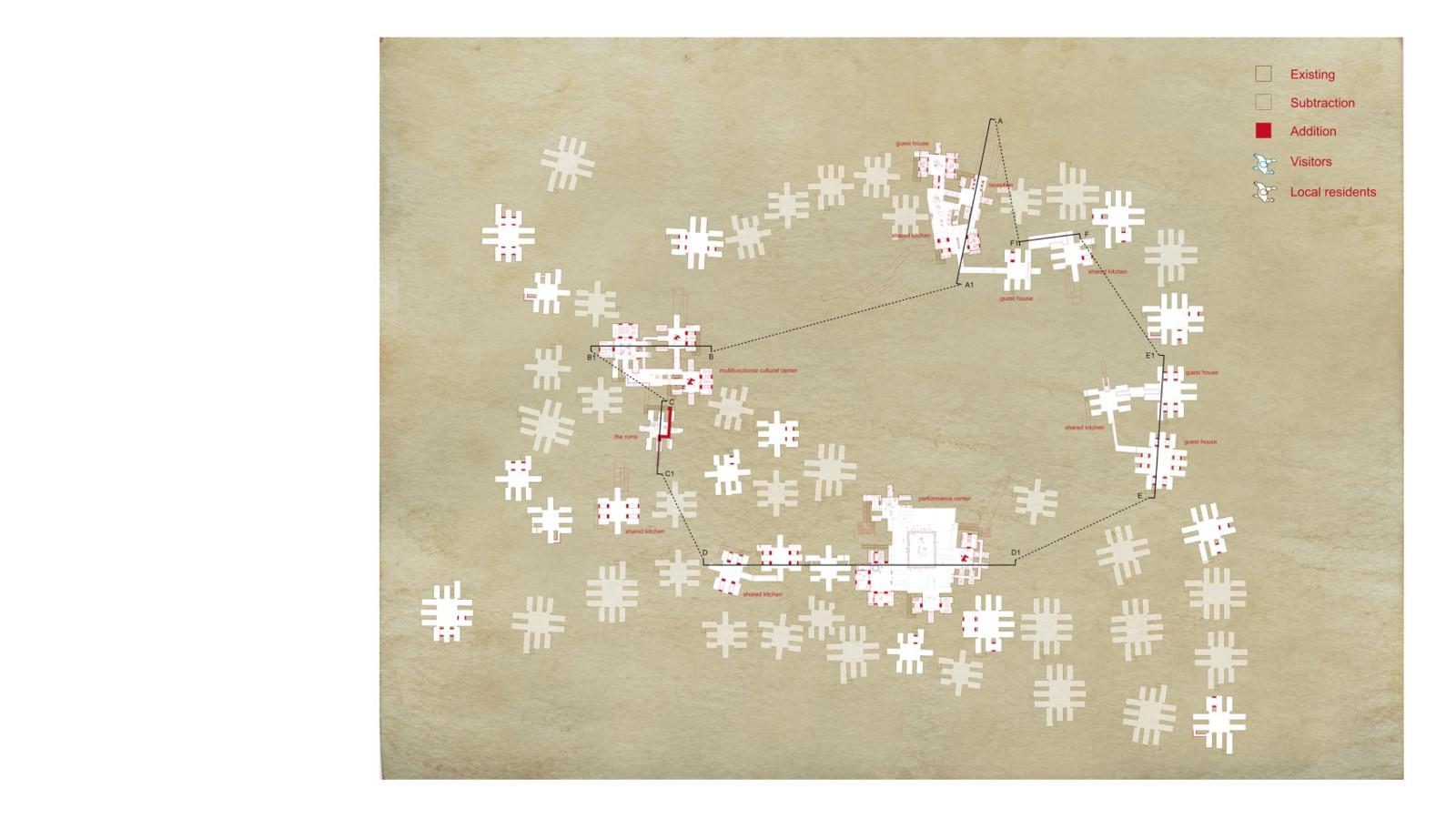
Image
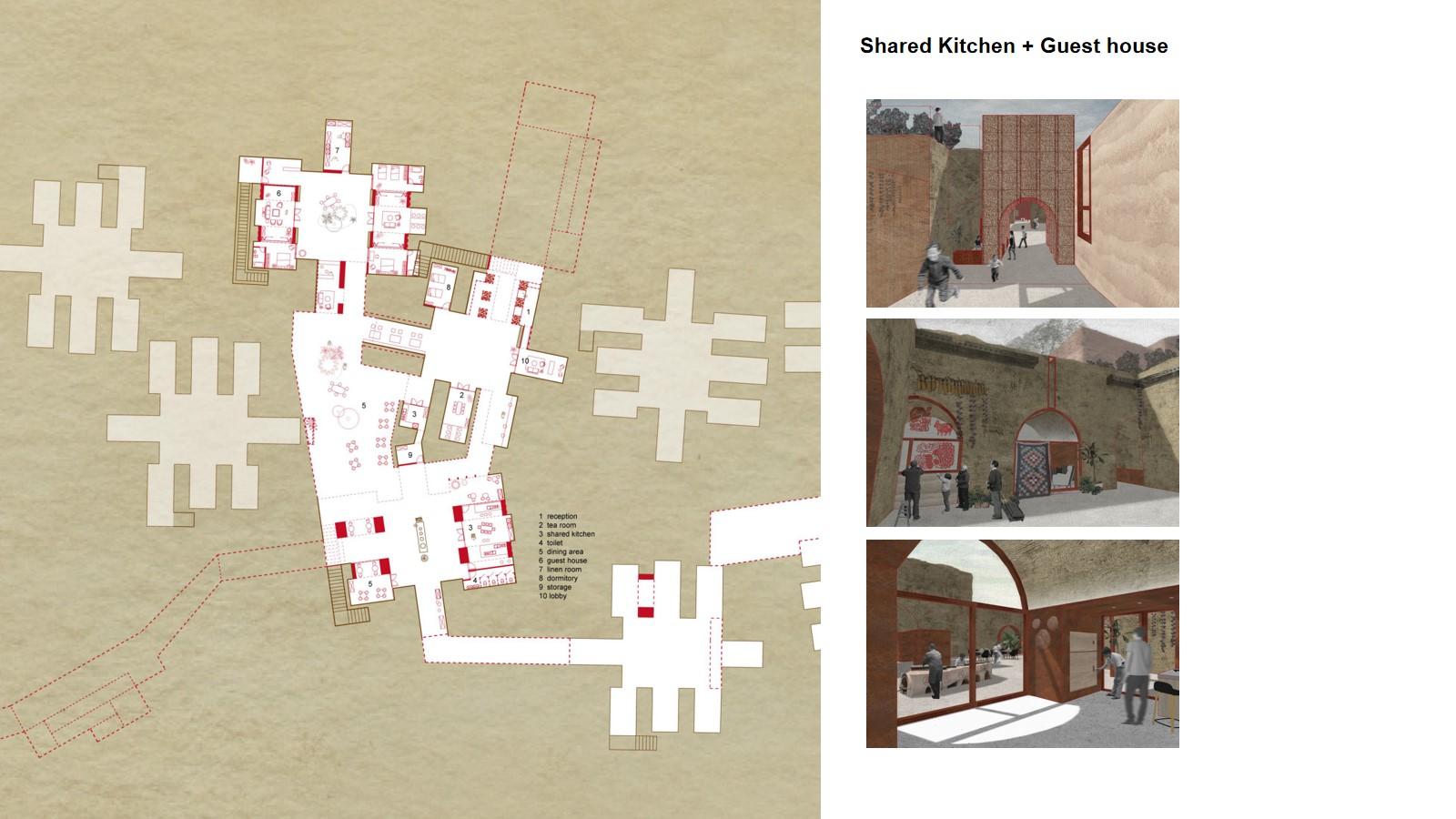
Image
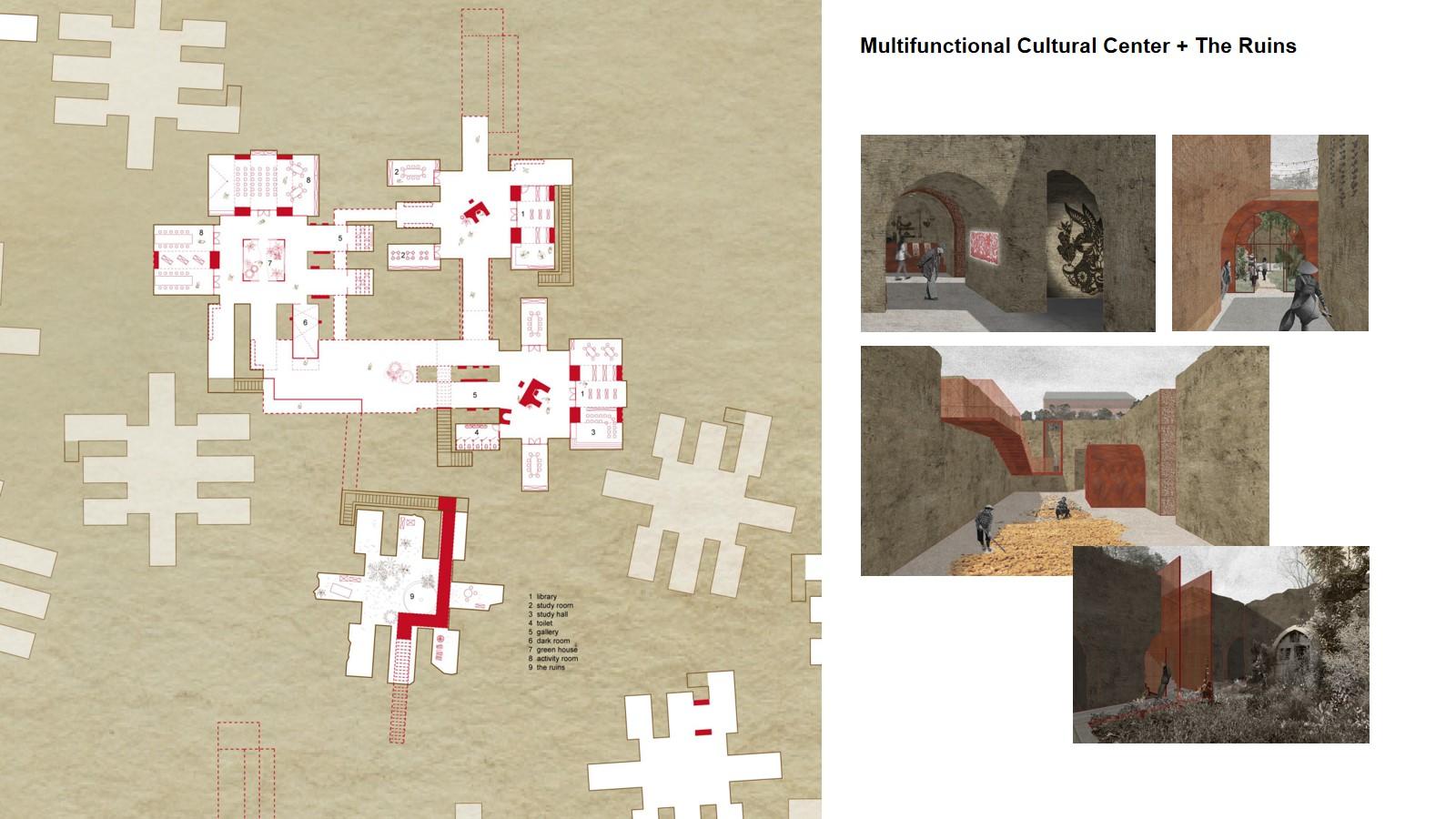
Image
